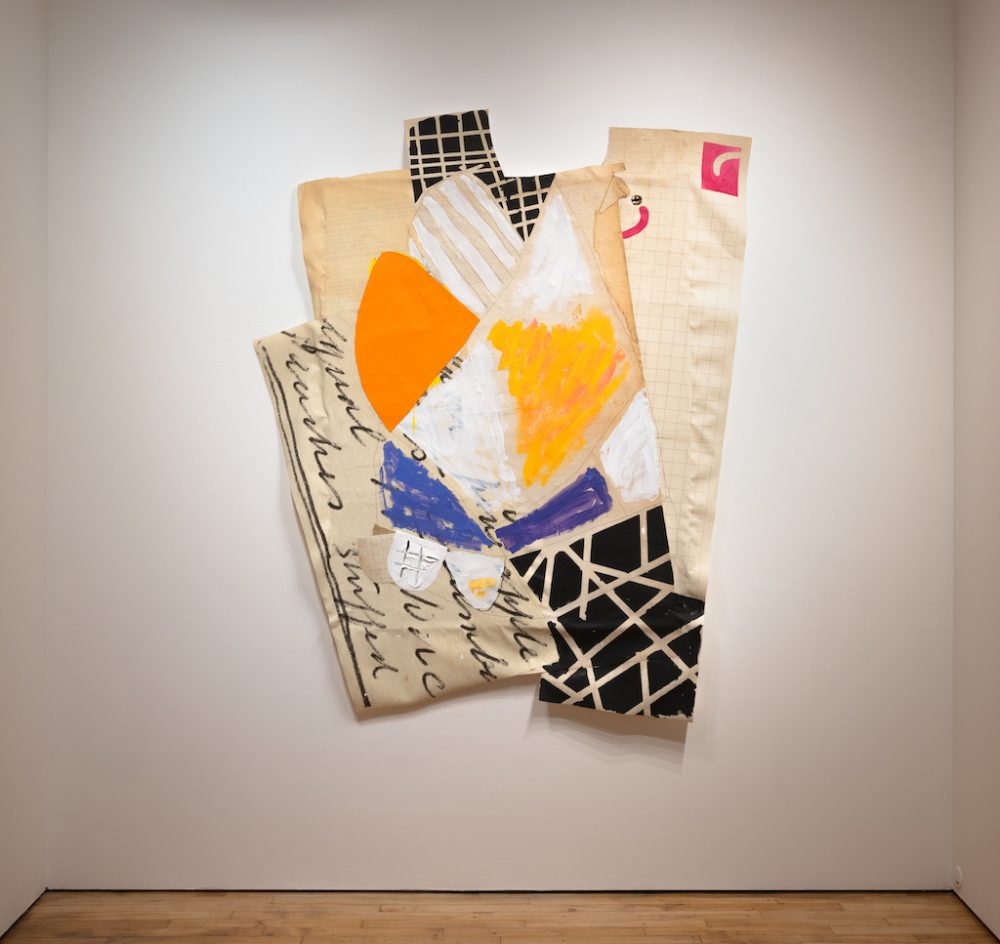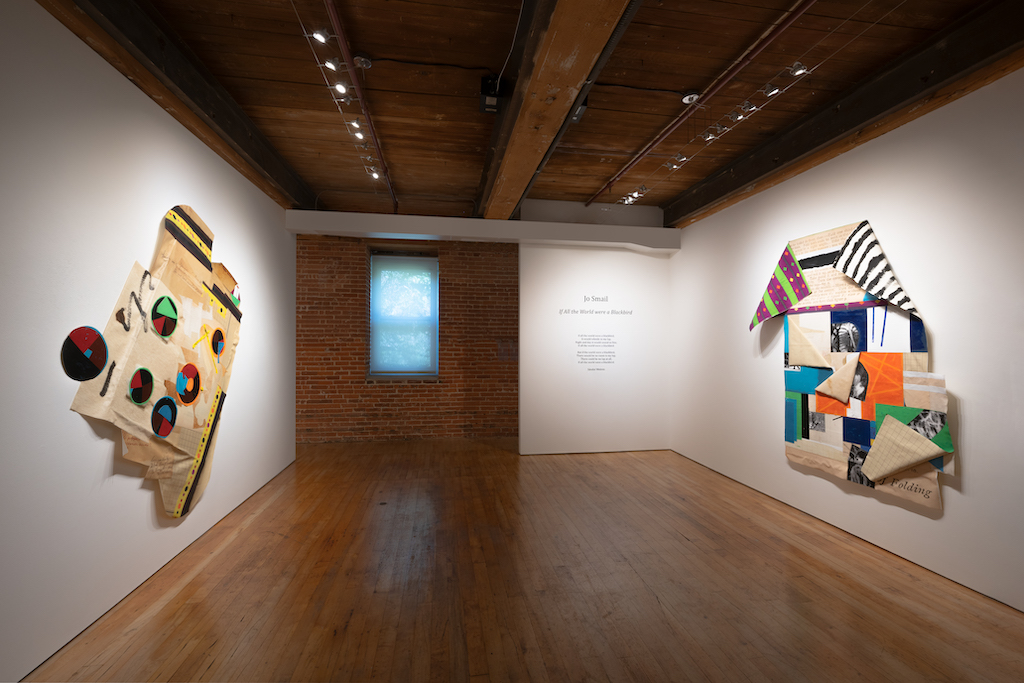You don’t have to be a synesthete to see, taste, or touch sounds. Just use your imagination. Jo Smail’s “Songs of Beating Wings,” one of three large abstractions in her solo show If All The World Were A Blackbird at Goya Contemporary, offers a nod to the sky-high flight of a bird chorus. Curated by gallery director Amy Raehse, the show runs through November 23, 2022.
The shaped painting, “Beating Wings,” blends clamorous fluttering and un-uttering song with rich, sensual surfaces. There are loud grids against grids shy and vapory; black and white against hue; opacities against luminous transparencies; a pink frown near a smile. And overlapping the artist’s mother-in-law’s technologically enlarged cursive handwriting, there’s a gloppy tic-tac-toe game board waiting to be “X”-ed and “O”-ed. There are also a pair of contrasting, wing-like triangles the color of orange sherbet. The stark white and off-white papers range from watery gesso to painted areas patinated to look like beige, aged parchment.
In Smail’s artist statement, she quotes the British music critic Tom Service. The best absurdist poems, he writes, “confront big ideas through lightness of touch, humor, and sleight of hand.” Similarly, Smail’s 3D collages/ paintings/ constructions/ shaped canvases/ abstractions/ improvisations—she just calls them works—are simple and whimsical, complex and serious. Serious fun, that is.
Smail’s carefully constructed work is built crisply, with shifting visual echoes. She isn’t above being inspired by an art form as housebroken as napkin folding. In “Songs of Folding and Hiding,” the artist incorporates folding instructions printed out from a Victorian book on the subject that Smail brought with her from South Africa, where she was born and educated before emigrating to the United States in 1985.














